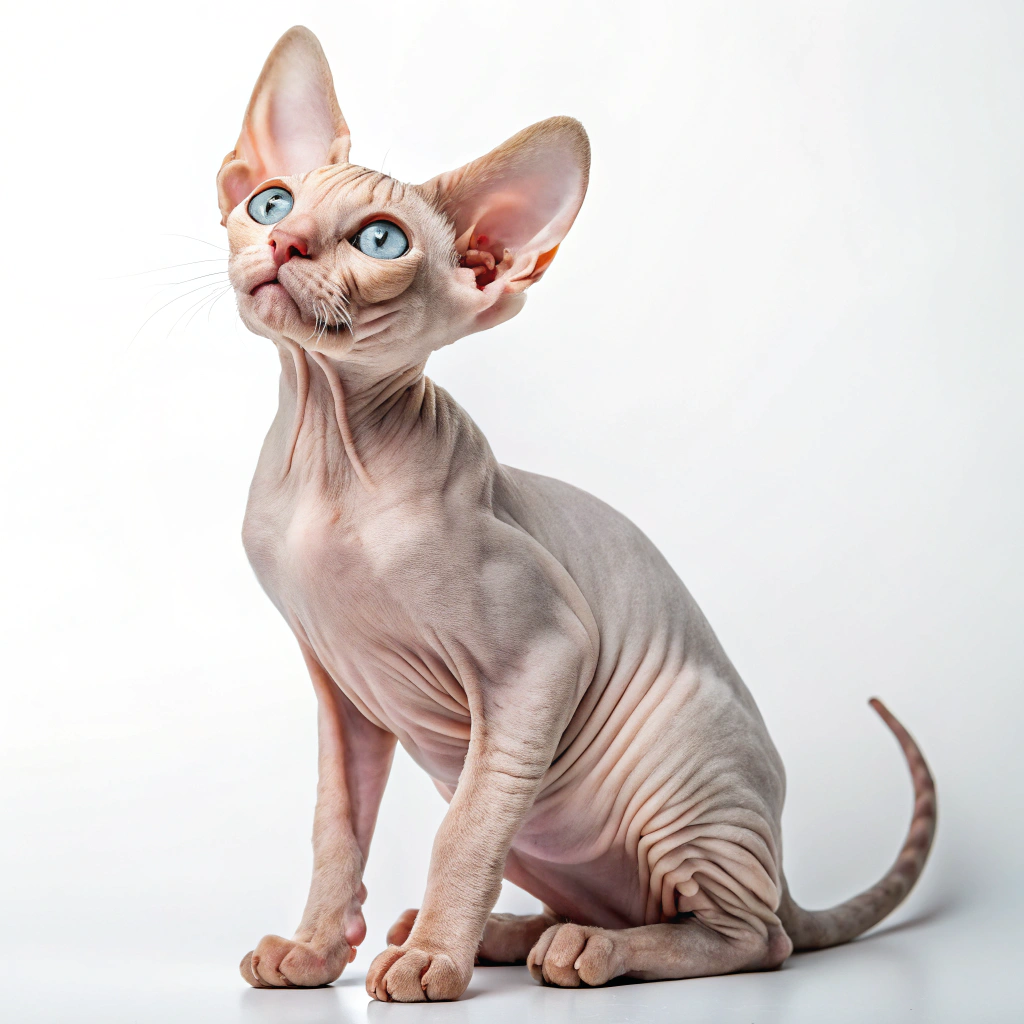keeping your Hairless Cats clean, hairless cats present a unique challenge. These fascinating creatures, such as the Sphynx, are not your typical feline friends with fur. So, why do you have to bathe hairless cats? Unlike their furry counterparts, hairless cats don’t have a protective coat to help manage their oils and dirt. Instead, they produce a lot of natural oils that can build up on their skin. Regular baths help to keep their skin healthy and prevent those unsightly greasy spots that can be so common.
Understanding the Skin of Hairless Cats
Hairless cats, such as the Sphynx breed, have an unusually oily skin that can seem like a small inconvenience for their owners. Without fur to absorb and distribute these oils, the grease accumulates directly on their skin. It’s like having a non-stop, natural oil slick that needs regular attention. This buildup can not only make your cat look dirty but can also lead to skin issues if not managed properly. Regular bathing helps to remove these oils and keeps their skin free from excess debris and bacteria.

How Often Should You Bathe a Hairless Cat?
Bathing a hairless cat is not just a luxury but a necessity for their health and comfort. Generally, these cats should be bathed every one to two weeks, depending on their individual needs and oil production. Think of it like changing your oil filter; it’s about keeping things running smoothly and avoiding bigger problems down the road. If you notice that your cat’s skin feels greasy or looks dull, it might be time for a bath. Just remember, the goal is to maintain their unique skin condition and keep them feeling fresh and clean.
Choosing the Right Products for Bathing
When bathing your hairless cat, choosing the right products is crucial. Opt for gentle, cat-friendly shampoos that are designed to handle their sensitive skin. Human shampoos or harsh chemicals can strip their skin of natural oils, leading to dryness or irritation. It’s like using the right recipe for a dish; using the wrong ingredients can spoil the whole experience. Make sure to rinse thoroughly and dry your cat completely to prevent any chill or discomfort.
Making Bath Time Enjoyable for Your Cat
Bathing a hairless cat can be a bit of a challenge, especially if they’re not accustomed to it. To make the experience more enjoyable, create a calm and soothing environment. Use warm water and handle your cat gently. It might take some patience and practice, but positive reinforcement can go a long way. Think of it as a bonding experience where both you and your cat come out refreshed and happy. Regular baths will not only help keep your cat’s skin in top shape but can also make them more accustomed to the routine.

So, why do you have to bathe hairless cats? The answer is all about managing their unique skin care needs. These cats produce a lot of natural oils that, without fur, can build up and lead to greasy skin and potential skin issues. Regular bathing helps maintain their skin health and keeps them looking their best. With the right products and a bit of patience, you can make bath time a positive experience for both you and your furry (or rather, hairless) friend.
FAQs
- How often should I bathe my hairless cat?
Hairless cats generally need a bath every one to two weeks to manage their oil production and keep their skin clean. - What kind of shampoo is best for hairless cats?
Use a gentle, cat-specific shampoo that is free from harsh chemicals and designed for sensitive skin. - Can I use human shampoo on my hairless cat?
No, human shampoos can be too harsh and may irritate your cat’s skin. Always opt for products specifically formulated for cats. - How can I make bath time less stressful for my cat?
Create a calm environment, use warm water, handle your cat gently, and provide positive reinforcement to make bath time more enjoyable. - What should I do if my hairless cat has skin problems despite regular baths?
If skin issues persist, consult your veterinarian to rule out any underlying health problems or to get personalized advice for your cat’s specific needs.

